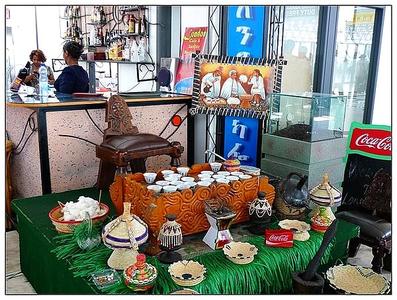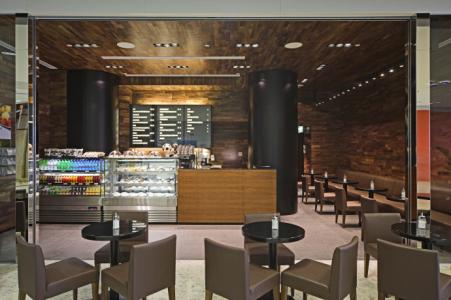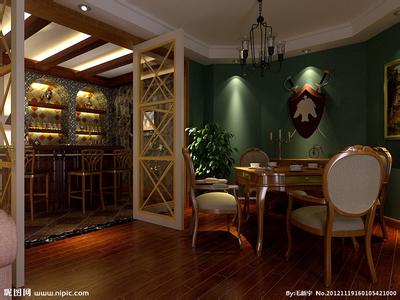The designer turned the old Japanese power plant into a cafe, and many people came here for coffee.
The horizontal main window of the glass facade defines the boundary between the interior and the surrounding environment, creating a visual relationship between "seeing and being seen". When people stay in this space, they will also notice the existence of others.
"
This is a three-story steel building that used to be a power plant. Want to create a space that is a "fair relationship" for everyone, which is also the basic concept of space for Blue bottle Coffee. In order to distinguish the appearance from other buildings, but the cafe can not appear abrupt, the designer maintained the same tone as other buildings. The well-designed little blue bottle is the finishing touch, making people notice the blue bottle cafe at a glance from the vast expanse of buildings.
The ▲ blue bottle distinguishes the cafe from other buildings.
The appearance of ▲ is fresh and natural.
The designer said
It is a great honor for me to transform the favorite building I have seen every day. About nine years ago, we set up a shared office HAPPA in the building across the street and moved our previous office there; we looked out the glass window at the neighborhood, which is my favorite building on the street.
The lobby of ▲ Cafe.
▲ coffee making and training workshop.
The main body of the design is white, and the bar is golden under the effect of lighting, creating a strong visual attraction. People can notice the bar as soon as they come in from the door and watch the whole coffee making process. Designers only set up the dining table near the floor-to-ceiling window, leaving extra space, seemingly scattered but actually orderly space to create a relaxed and leisurely atmosphere for guests. When you come to the Blue bottle Cafe, you are sure to find a leisurely corner of your own. The Blue bottle Cafe is also a coffee shop and office space, as well as training rooms and workshops for coffee production.
To maximize the use of ▲ space, there are small gardens between the floors.
The design of the new store is a completely new upgrade. In the original two-story factory space, the design team joined a small garden. The small gray platform, which can hold more than a dozen people, sits around the gray stool, a small salon. The green flowerpot vegetation makes the whole space fresh and natural, creating a sense of courtyard. In such a "small courtyard", you almost forget that this is actually an indoor floor.
▲ 's hanging glass table.
The dining area between the attic of ▲.
The slogan of the old power plant is retained, and the old traces of the power plant still remain in the building, but it is transformed into another kind of art to match the atmosphere of the whole cafe. The most distinctive feature on the second floor should be the transparent glass dining area. The transparent glass floor eliminates the sense of security of the wooden floor, leaving the entire dining environment in a suspended state. This is a restricted area for people who are afraid of heights, but it also gives people a chance to challenge. Not confused in the face of danger, not afraid, find their own inner balance, this is probably what the Blue bottle Cafe wants to pass on to people.
▲ floor plan
▲ section view
Architect: Schemata Architects
Address: Nakamoshi, Muhei District, Tokyo 153-0061, Japan
Architect in charge: Jo Nagasaka / Schemata Architects
Project team: Ryosuke Yamamoto, Yui Matsushita
Construction area: 397.32 square meters
Project year: 2016
Photographer: Takumi Ota
Manufacturer: ERCOL, ISHINOMAKI LABORAORY, Mala Gruppen
Construction: TANK

Important Notice :
前街咖啡 FrontStreet Coffee has moved to new addredd:
FrontStreet Coffee Address: 315,Donghua East Road,GuangZhou
Tel:020 38364473
- Prev

China's first Brazilian boutique coffee shop landed in Sinan residence in Shanghai
The coffee industry has developed rapidly in China in recent years. According to statistics, China's total coffee consumption has grown at an average annual rate of more than 20% in the past five years. From a world point of view, the average annual consumption of coffee in the world is 250 cups per capita, while that of Chinese mainland is only 4 cups. It can be seen that China is a market with great potential.
- Next

Paris Bei Tian SBS theme coffee shop officially launched in Shanghai, China.
Whether this kind of Paris sweet far exceeds your expectations! It is understood that in the future, Paris Beit's SBS theme store will not only be open to the public as a multimedia audio-visual space, but also may hold direct or indirect star exchange activities. And this opening will also be accompanied by a large number of promotions, bringing more benefits to consumers in the same scene as the successors in the play.
Related
- What documents do you need to go through to open a coffee shop? coffee shop coffee shop certificate processing process
- How to purchase Coffee beans in small Cafe how to choose a suitable supplier for domestic Coffee supply Company
- How to drink Starbucks Fragrance White Coffee? how to make Australian White Coffee? what Italian coffee beans are recommended?
- The Story of Flora Coffee: the name of Flora Coffee Bean and the implication of the Flowers on Florna Coffee
- How much does a cup of coffee cost? How much is the profit of a cup of coffee? What is the profit of the coffee shop in a year?
- Yunnan small Coffee, known as "fragrant Coffee", introduces the characteristics of Alpine Arabica Coffee producing areas in Yunnan, China
- 2023 latest Starbucks full menu price list how much is a cup of Starbucks coffee what is better to drink the most popular hot and cold drinks recommended
- Starbucks different kinds of Coffee Price list Starbucks menu 2023 Top Ten Best drinks in Starbucks
- Starbucks Spring praise Comprehensive matching Coffee Bean theme Story Packaging implication and taste description
- The cost of a cup of coffee latte American coffee cost price and selling price

